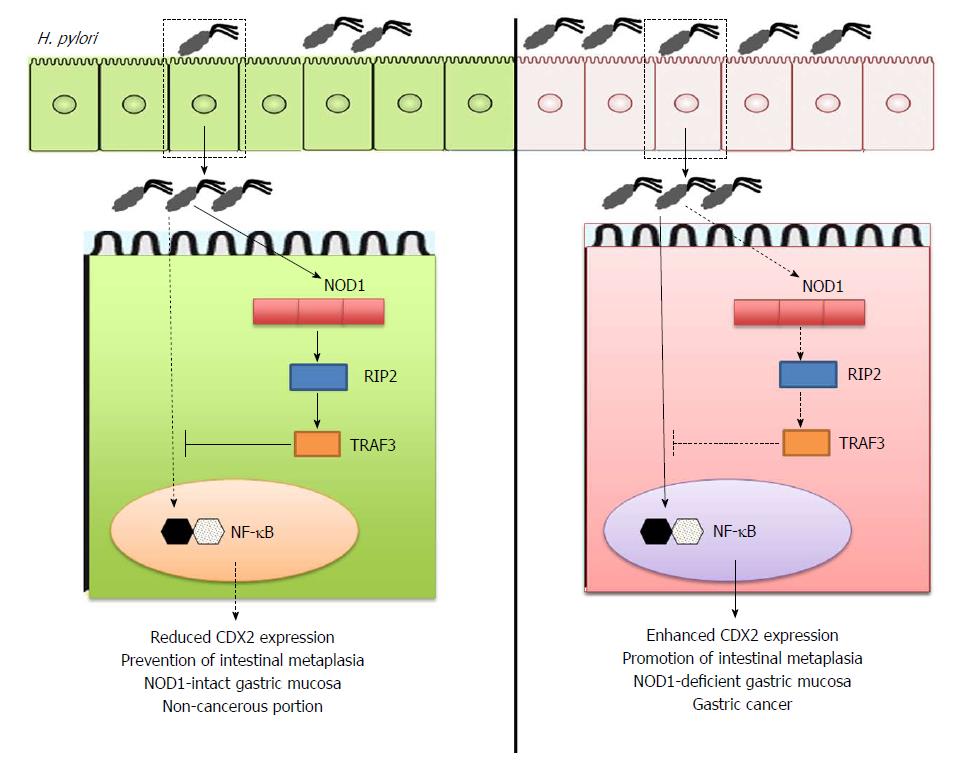Copyright
©The Author(s) 2018.
World J Gastroenterol. Apr 28, 2018; 24(16): 1725-1733
Published online Apr 28, 2018. doi: 10.3748/wjg.v24.i16.1725
Published online Apr 28, 2018. doi: 10.3748/wjg.v24.i16.1725
Figure 1 Nucleotide-binding oligomerization domain 1-mediated mucosal host defense against Helicobacter pylori infection.
Nucleotide-binding oligomerization domain 1 (NOD1) recognizes Helicobacter pylori (H. pylori)-derived peptidoglycan (PGN) or outer membrane vesicles (OMVs). Sensing of H. pylori-derived PGN or OMVs by intracellular NOD1 in the gastric epithelial cells induces production of type I IFN and C-X-C motif chemokine ligand 10 (CXCL10) through the receptor interacting protein 2 (RIP2)-TNF receptor-associated factor 3 (TRAF3)-interferon regulatory factor 7(IRF7)-IFN-stimulated gene factor 3 (ISGF3) pathway, thereby promoting T helper type 1 (Th1) responses. ISGF3 is a heterotrimeric complex composed of signal transduction and activator of transcription 1 (Stat1), Stat2, and IRF9. NOD1 activation also induces production of anti-microbial peptides (AMPs) through nuclear translocation of nuclear factor-kappa B (NF-κB) subunits. IFN-γ and AMPs exert bactericidal effects.
Figure 2 Prevention of gastric cancer development by nucleotide-binding oligomerization domain 1.
Sensing of Helicobacter pylori (H. pylori)-derived peptidoglycan (PGN) by intracellular nucleotide-binding oligomerization domain 1 (NOD1) in gastric epithelial cells induces activation of TNF receptor associated factor 3 (TRAF3) as mentioned in Figure 1. TRAF3 activation by NOD1 negatively regulates expression of caudal-related homeobox 2 (Cdx2) via the inhibition of nuclear factor-kappa B (NF-κB) activation to prevent intestinal metaplasia and gastric cancer (left panel). On the other hand, lack of NOD1-mediated negative regulation on Cdx2 expression promotes the development of gastric cancer (right panel).
- Citation: Minaga K, Watanabe T, Kamata K, Asano N, Kudo M. Nucleotide-binding oligomerization domain 1 and Helicobacter pylori infection: A review. World J Gastroenterol 2018; 24(16): 1725-1733
- URL: https://www.wjgnet.com/1007-9327/full/v24/i16/1725.htm
- DOI: https://dx.doi.org/10.3748/wjg.v24.i16.1725










